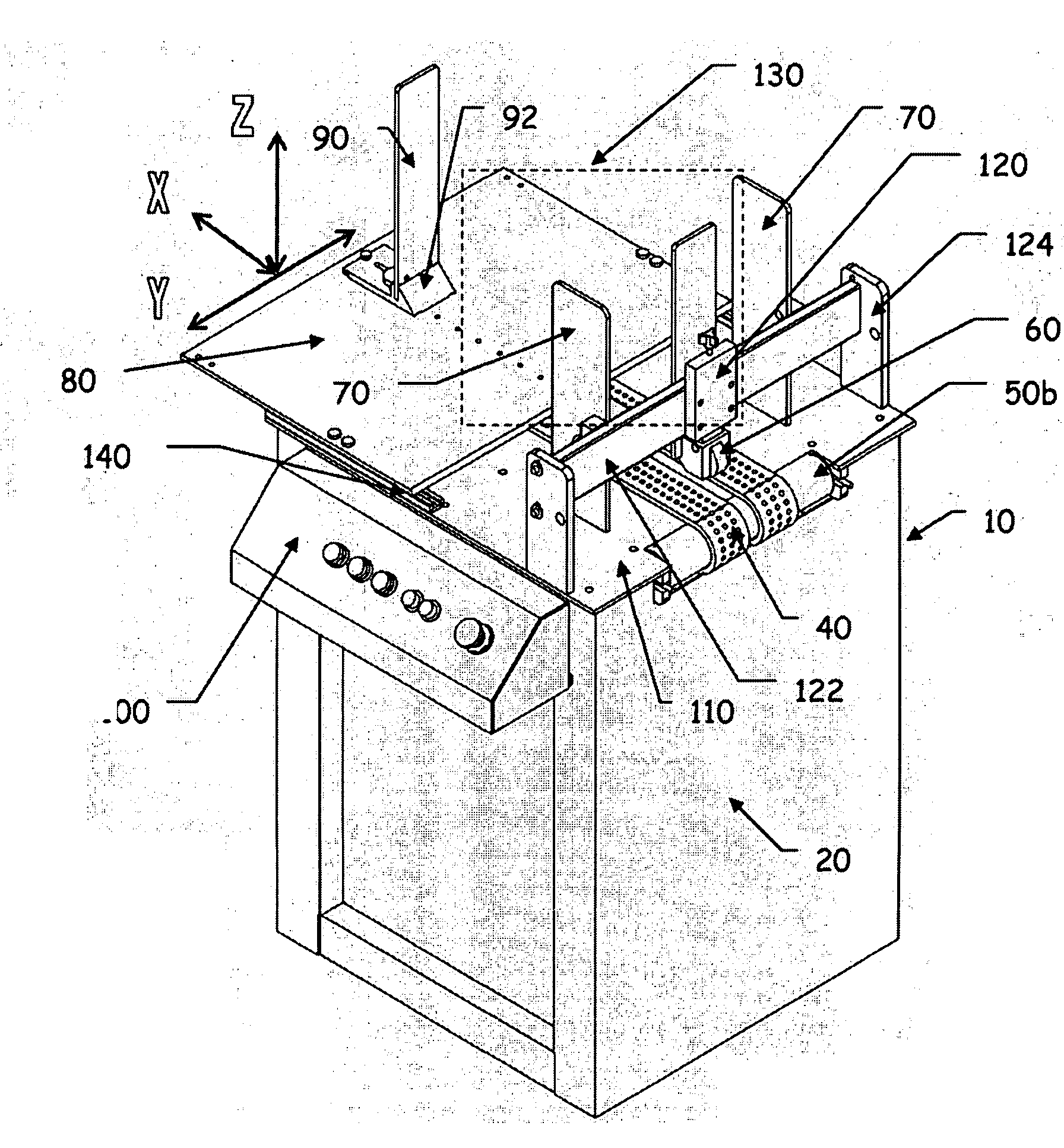Vacuum friction feeder
a friction feeder and vacuum technology, applied in the direction of thin material processing, article separation, transportation and packaging, etc., can solve the problems of difficult, if not impossible, to feed different types of flat stock, use the same friction feeder, and conventional devices have a difficult time feeding long, dense, wide flat stock
- Summary
- Abstract
- Description
- Claims
- Application Information
AI Technical Summary
Benefits of technology
Problems solved by technology
Method used
Image
Examples
Embodiment Construction
[0022]FIG. 1 shows an exemplary floor model bottom-feed vacuum friction feeder 10 in accordance with the invention. The feeder 10 comprises an enclosure 20 (i.e., a cabinet), at least one and preferably two or more parallel vacuum friction belts 40, a pair of rollers 50a, 50b (see also FIG. 4) for supporting the vacuum friction belt(s) 40, a separator 60, a pair of opposing product side guides 70, an exposure table 80, at least one product back support 90, an operator control panel 100, a ported table top 110, a separator adjuster assembly 120, a hopper area 130 and an exposure table slide adjuster 140. FIG. 4 shows that the table subassembly has a drive motor 30, which drives (i.e., rotates) the vacuum friction belt(s).
[0023]Superimposed on FIG. 1 is an X-axis, which extends toward and away from the separator 60 in a plane defined by the top surface of the exposure table 80. Preferably the top surface of the exposure table 80 is horizontal and parallel to the floor space supporting...
PUM
 Login to View More
Login to View More Abstract
Description
Claims
Application Information
 Login to View More
Login to View More - R&D
- Intellectual Property
- Life Sciences
- Materials
- Tech Scout
- Unparalleled Data Quality
- Higher Quality Content
- 60% Fewer Hallucinations
Browse by: Latest US Patents, China's latest patents, Technical Efficacy Thesaurus, Application Domain, Technology Topic, Popular Technical Reports.
© 2025 PatSnap. All rights reserved.Legal|Privacy policy|Modern Slavery Act Transparency Statement|Sitemap|About US| Contact US: help@patsnap.com



